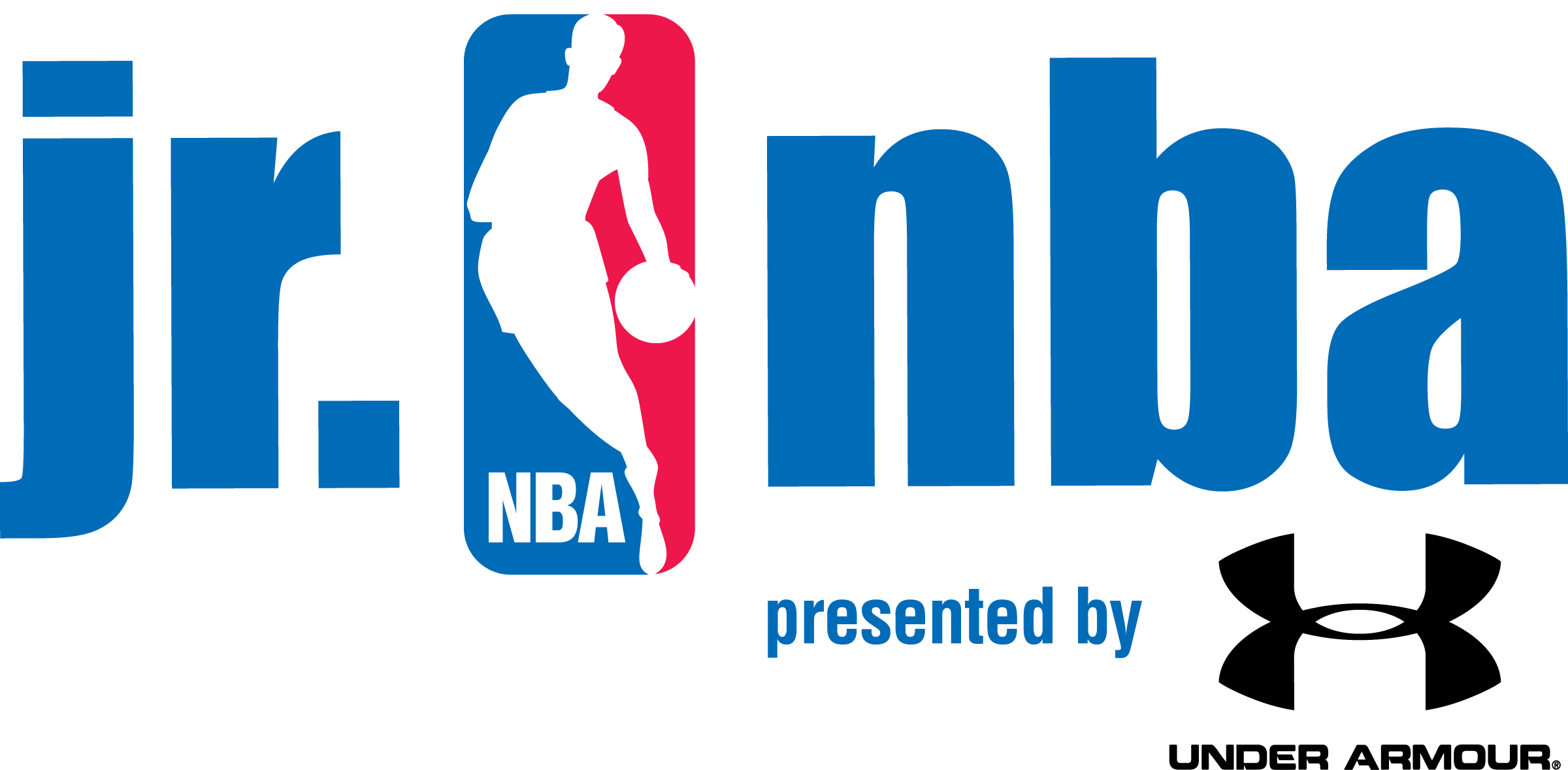
Basketball on the Edge – Do You Want to Know The Secret to Being a Better Player?
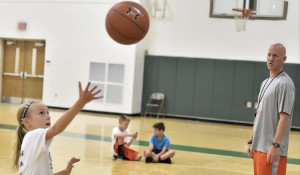
Let’s imagine a scenario. You are given an opportunity to enter a one on one tournament. Your coach says that there are two skill divisions and your skill level is right in between the two divisions. In the lower division you might be one of the favorites to win the tournament. In the higher division, you will probably struggle, but have the chance to be competitive and win some games. Which division would you choose to play in?
The truly competitive player will choose to play in the higher division. Why? Isn’t winning important? Doesn’t it build confidence? And self-esteem? The answer lies in your approach. The player that chooses the higher division is exhibiting the characteristics of a growth mindset.
If you don’t know much about “growth mindset” you can learn more by clicking here. Carol Dweck pioneered the research on growth mindset. Dweck is a psychology professor at Stanford University and author of the book Mindset: The New Psychology of Success.
The major difference between a growth mindset and a fixed mindset boils down to a very simple concept:
People with a Growth Mindset believe that skill can be developed. (I can get better at…)
People with a Fixed Mindset believe that skill cannot be changed. (I’m not good at…)
The mindset that you adopt has a huge impact on your basketball career and your life in general.
A growth mindset increases your desire to learn. Improvement only occurs through learning. Learning is often a struggle. We learn best when we practice deliberately at the edge of our comfort zone. Players with a growth mindset are not afraid to make mistakes or look bad when they are learning a new skill. These players know that the only way to improve and get better is to work hard and accept challenges.
A fixed mindset increases your desire to look good. When we believe that we are either “good” or “bad” we seek out activities or competition that makes us look good. We’d rather play against competition that we can easily beat because it makes us look good rather than challenge ourselves because then we risk looking “bad”.
Let’s look at some common basketball situations and how the two mindsets differ in their approach.
Responding to a coach’s feedback (constructive criticism)?
Growth Mindset – The player looks at the coach’s feedback as a tool to help them improve. They are open to coaching because feedback is a way for them to learn and develop their skills. Great players want to be coached.
Fixed Mindset – The player looks at the coach’s feedback as an attack on their skill level. They don’t believe they can improve so why listen at all. They think, “I’m already good, why is the coach picking on me?”
Accepting challenges?
Growth Mindset – The player seeks out challenges. They want to guard the best player on the other team. They want to play a tough schedule. They want to play against the best teams. Accepting a challenge is a risk worth taking because it offers opportunities to improve and grow.
Fixed Mindset – The player looks for the easiest route. They want to guard the weakest player on the other team. They want to play the easiest schedule. They want to play against the worst teams. Accepting a challenge is a risk not worth taking because they might look bad.
What happens when things get tough?
Growth Mindset – The player looks for solutions and tries to figure out a way to get past the obstacle or problem. Not starting? Figure out what I can do better. Missing too many jumpers? Work on my shot. Get knocked down and get right back up. Resilient.
Fixed Mindset – The player gives up easily and accepts their fate. Not starting? I’m just not good enough and coach doesn’t like me. Missing too many jumpers? I’m not a good shooter. Get knocked down and stay down. Weak.
What’s your effort level?
Growth Mindset – Effort is directly tied to results so the player works hard at all times. I can improve any skill with effort. Effort at the edge of my comfort zone is the key to learning and improvement. The player believes effort drives success.
Fixed Mindset – Effort has no correlation to results so the player does not value it. I’m either good at a skill or I’m not. The amount of effort put into something is irrelevant because my skill level is static.
Am I a great teammate?
Growth Mindset – Player is inspired by the success of their teammates. They use the success of others to learn lessons they can apply in their own life. They are happy for the success of their teammates and don’t compare themselves to others.
Fixed Mindset – Player is threatened by the success of teammates. A teammates’ success makes the player look worse. They secretly root for teammates to fail and are always comparing themselves to others.
Overall Outlook?
Growth Mindset – Focused on the process of learning and what it takes to get better. Win or lose, how can they continue to improve and get better?
Fixed Mindset – Focused on the outcome. They search out “easy” wins that make me look good. If they lose it makes them look bad and nothing can be gained from that.
As a player I always looked for opportunities to get better. I HATED playing in games with players that didn’t challenge me. I avoided those games like the plague. If I did get in a game like that I tried to handicap myself by only going left, or shooting only layups, and once I got to high school I never called a foul in a pick-up game, ever. I had never heard of the Growth Mindset way back then, but when it came to basketball I had it.
Players who adopt a growth mindset are much more likely to reach their potential than those that don’t. A growth mindset can be carried over to all aspects of a player’s life. As a student, as a family member, as a musician, as a friend, as anything those with a growth mindset are much more likely to find true success (however you define it) than those with a fixed mindset.
Let’s end with a quote from Carol Dweck herself, “This is hard! This is FUN!
Leave us a comment about this post headstartbasketball@usa.net
Sign up now to get a “Head Start” on your competition with our free basketball tip of the day delivered straight to your inbox. Click below, enter your email and we’ll also send you our E-Book, “Mental Toughness, Improve Your Brain – Improve Your Game”.
Basketball on the Edge – Are you ok with being Average? Me Neither by Tyler Gaffaney
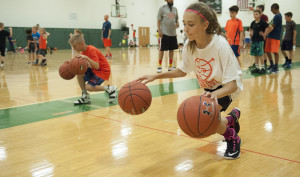
In this post Tyler Gaffaney from www.hoopgains.com shares 7 tips for basketball players who don’t want to be mediocre.
“There’s nothing wrong with being average. But if you’re like most players, being mediocre is the last thing you want. I promise you, If you make it a goal to do these 7 things, you will not be mediocre.”
Click here to read the article by Tyler Gaffaney
Leave us a comment about this post headstartbasketball@usa.net
Sign up now to get a “Head Start” on your competition with our free basketball tip of the day delivered straight to your inbox. Click below, enter your email and we’ll also send you our E-Book, “Mental Toughness, Improve Your Brain – Improve Your Game”.
Basketball on the Edge – Lessons on Success and Deliberate Practice from Mozart, Picasso, and Kobe Bryant By James Clear
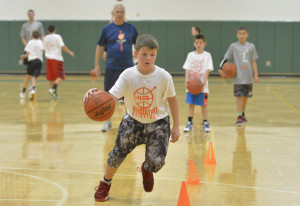
This week’s article is a fascinating look at the concept of deliberate practice written by James Clear. Pay particular attention to the story framed around this quote from the article about Kobe Bryant.
“Putting in a lot of time might make you tired, but simply working a lot (even if it’s 10,000 hours over the course of your career) isn’t enough to make you a top performer. It’s not the same thing as practicing deliberately. Most people who think they are working hard are merely developing the skill of being in the gym, not the skill of making baskets.”
I’ve told this story many times before, but I knew a guy in high school who was a player for a rival school. He and I worked out at the same facility. I’d be there working on my game for two hours or so every day. I always had a plan for what I wanted to do that day. I had a certain number of shots I wanted to make each day from different spots on the court or using different moves to get me into my shot. I worked the entire time, maybe taking a quick break to grab a drink of water once or twice during my time in the gym. Meanwhile, my friend would saunter into the gym shoot a few free throws, take a few shots, walk out to talk to people riding the exercise bikes, sit down for a five minute water break, talk to a few girls that were working out. I’d see him the next day and he’d tell me how he worked out for 4 hours the day before. I always looked at him sideways and laughed to myself. Little did I know that I had learned the concept of deliberate practice way back in the late 80’s before anyone had ever coined the term!
James Clear does a great job in the article of helping players, parents, and coaches understand that there is a difference between “being in the gym” and “practicing deliberately”.
Click here to read the article by James Clear
Leave us a comment about this post headstartbasketball@usa.net
Sign up now to get a “Head Start” on your competition with our free basketball tip of the day delivered straight to your inbox. Click below, enter your email and we’ll also send you our E-Book, “Mental Toughness, Improve Your Brain – Improve Your Game”.
Basketball on the Edge – Increase Emotional Intelligence with Intentional Interruptions by James Leath

Do you remember being punished by your coach for being late to practice? When you were a kid? Before you could drive? Before you had any control over what time you arrived at practice? If you were ever in this situation as a kid or now face this as a coach or parent of young athletes you need to read this article!
Click here to read the article by James Leath
Leave us a comment about this post headstartbasketball@usa.net
Sign up now to get a “Head Start” on your competition with our free basketball tip of the day delivered straight to your inbox. Click below, enter your email and we’ll also send you our E-Book, “Mental Toughness, Improve Your Brain – Improve Your Game”.
Basketball on the Edge – Automate Your Game!
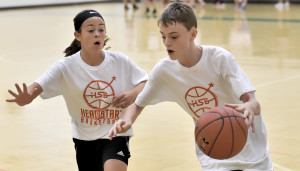
Coaches love players that have a high basketball IQ. I’m around coaches all the time who say they want players who can “think” the game and understand what to do when different situations present themselves. But, what if all of us are wrong? Or at least not as right as we think?
Players that have a high basketball IQ do “think” the game better than others, but that is mostly because so many decisions are put on auto pilot by high IQ players. Instead of taking the time to think about what decision or action needs to be taken, the player reacts to the play immediately and without conscious thought. How does a player develop that ability to react immediately and automatically?
The first way is through experience. The more you play, the better you get at reacting to situations and making the right decision. I recently read an article explaining that Major League Baseball hitters could not even make contact against Jennie Finch, a high level women’s fast pitch softball pitcher. Why couldn’t these professional players hit the ball? Basically because the cues were different. It wasn’t reaction time or bat speed, it was simply that the hours of deliberate practice against overhand pitchers off a mound 60 feet 6 inches away did not prepare them to understand the cues (arm angle, release point, grip, etc.) of an underhand fast pitch. The only way to notice these bodily giveaways is to observe them over and over through thousands of hours of meticulous practice. It’s a fascinating article that you can read here. The point is that by putting in hours of practice you can train your mind and body to work together to solve very complex problems in an instant.
The problem is, how can players with less experience gain the advantage that comes with being able to react quickly to a given play? The answer lies in developing “automatic” reactions to situations that happen repeatedly during a basketball game. Let me give you an example. During a basketball game each team gets a certain number of possessions. Each time the ball changes possession there is a transition from offense to defense. What should a player do whenever there is a change of possession? Sprint the floor in transition! On defense a player needs to get back to protect against a fast break and then get set up for half-court defense. On offense a player should sprint down the floor to get in position for an easy basket or set up the offense. Unfortunately, what often happens when the ball changes possession? Players stand staring at the ball for a second or two before they react either losing their advantage or giving an advantage to their opponent. Instead, players should train themselves, or coaches should train their players to react immediately when there is a change of possession and begin sprinting down the floor. This particular scenario happens over and over during a game. Don’t “think” about it. Players just need to react EVERY time. It should become a habit. It doesn’t take a high basketball IQ to sprint immediately in transition it just takes a commitment to create the habit.
- What are some other examples of situations that occur frequently during a game when a player can “automate” their reaction?
- The ball goes out of bounds. Don’t stand around, instead immediately find your man if you’re on defense or set up your out of bounds play if you’re on offense. Don’t wander around the court waiting for play to resume, react automatically when the ball goes out of bounds.
- A shot goes up by the opposing team. What should you do? Get a hand up and then start your box-out. Every time.
- If you make a mistake, don’t put your head down and pout as so many players do, automatically look to make a hustle play.
- When you catch the ball on offense always look first to the basket. Maybe a teammate is open for a layup, maybe you have a driving lane, you’ll never know if you don’t look.
- When a pass is thrown to you, keep running towards the pass until you catch it. Make it a habit.
- On defense, whenever a pass is made, “jump to the ball”. This means moving a step or two towards the ball quickly to establish a new defensive position. This should happen without having to think about it.
- Set a screen, then roll. Too many players screen and then don’t roll, especially at the youth level. Make the roll automatic and then work on the game reads as players develop and gain experience.
You can probably think of many other situations where an automatic response would serve a player well. The point is that a high basketball IQ is critical to being a good player, but save your brain power for scenarios where those decision making skills are needed. Look for moments as a player or a coach that happen over and over and then “Auotmate” your game so your response is immediate and reflexive. If you can Automate Your Game you’ll be more effective, be perceived as a smarter player, and not waste time “thinking” about decisions that should be automatic.
Leave us a comment about this post headstartbasketball@usa.net


